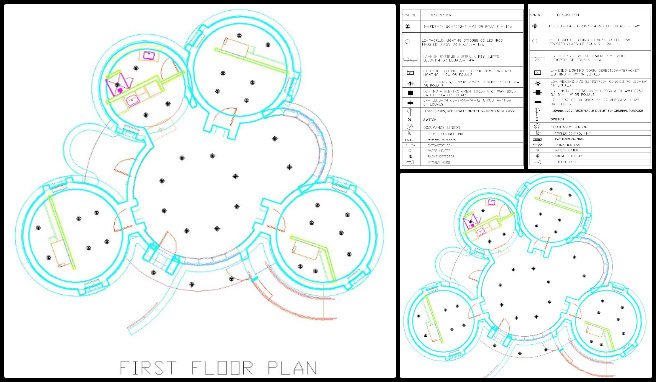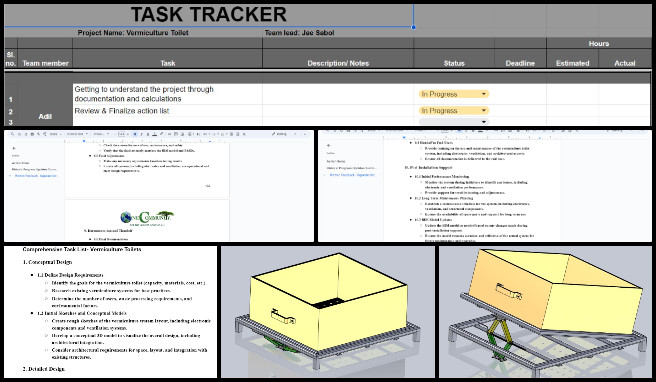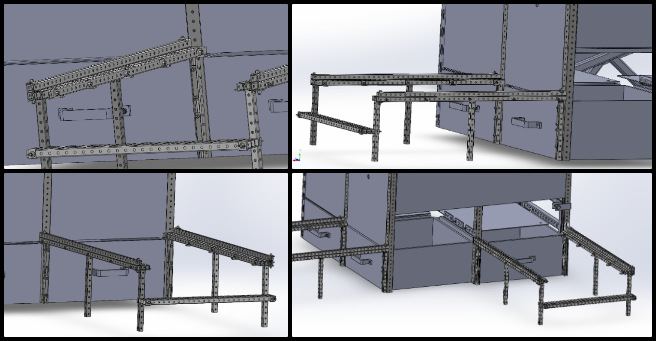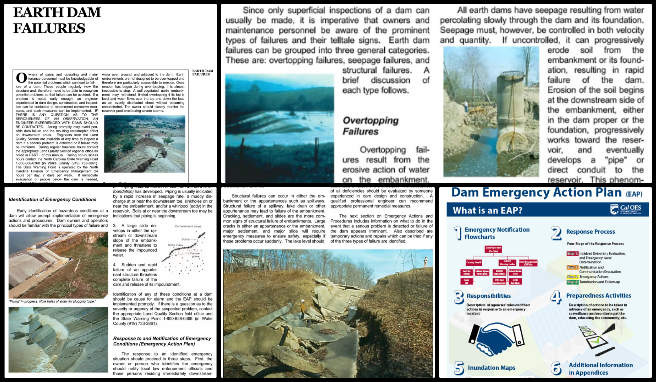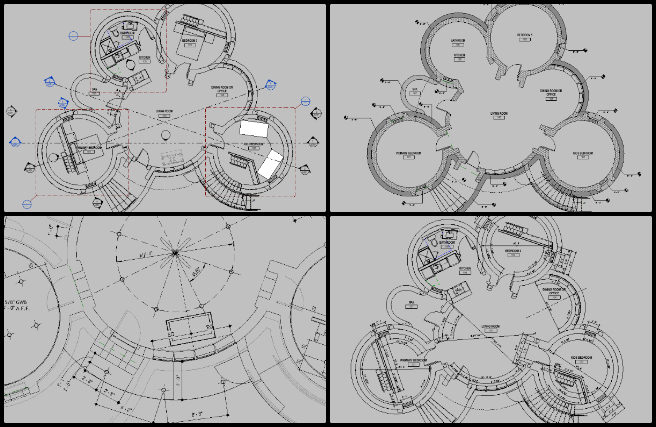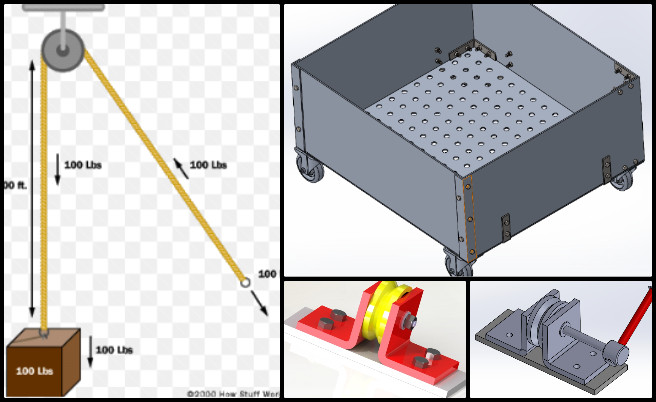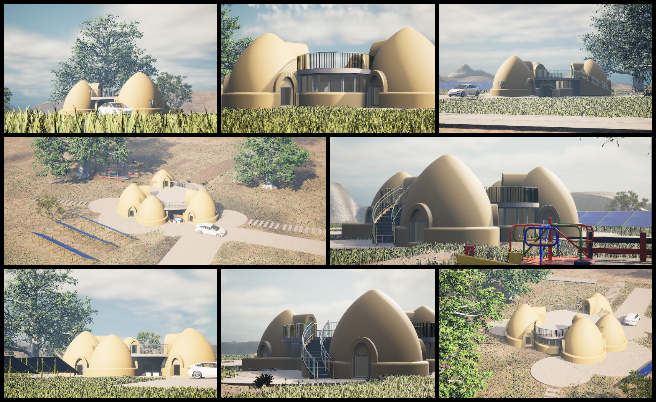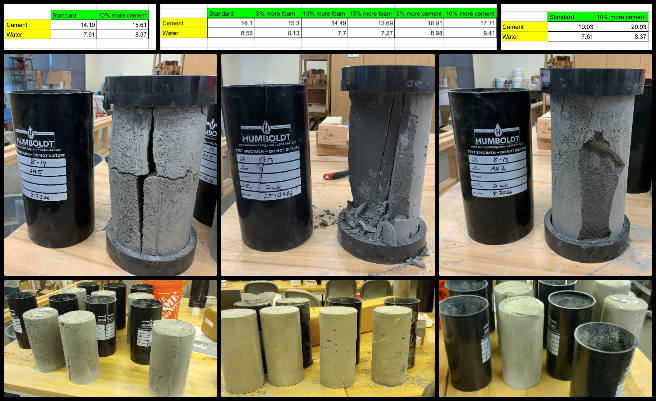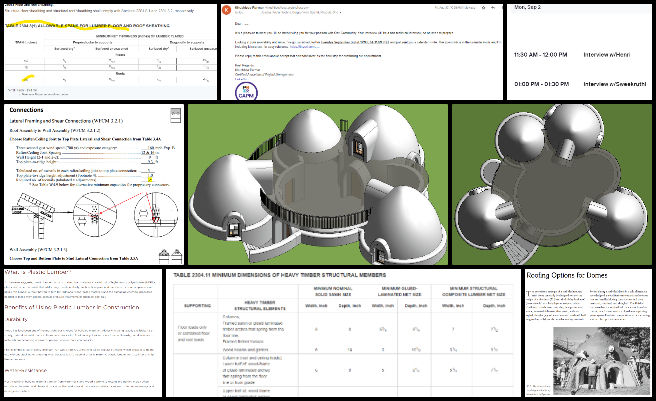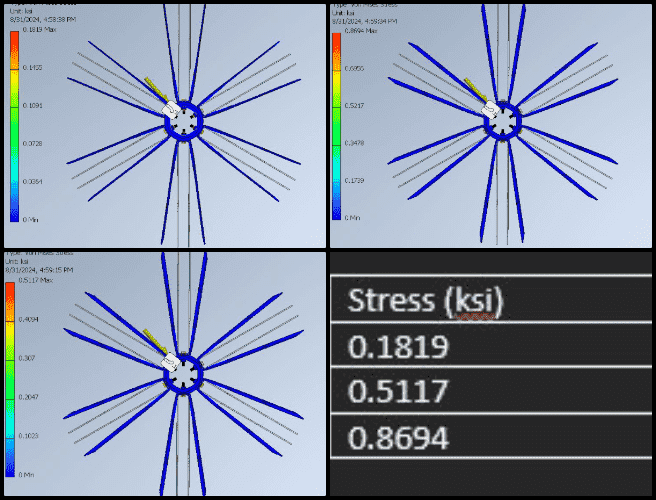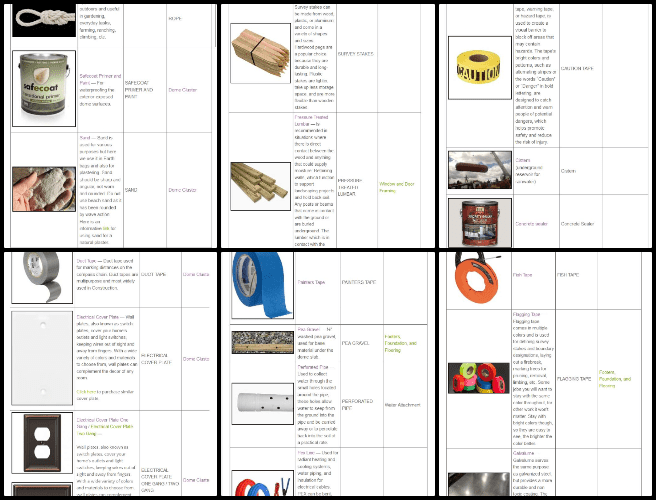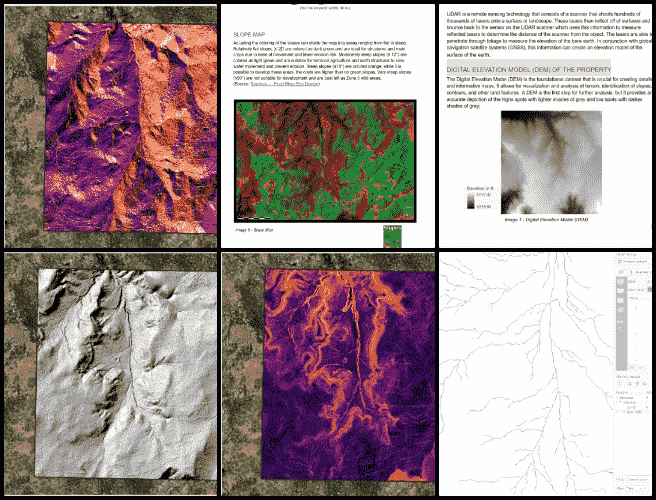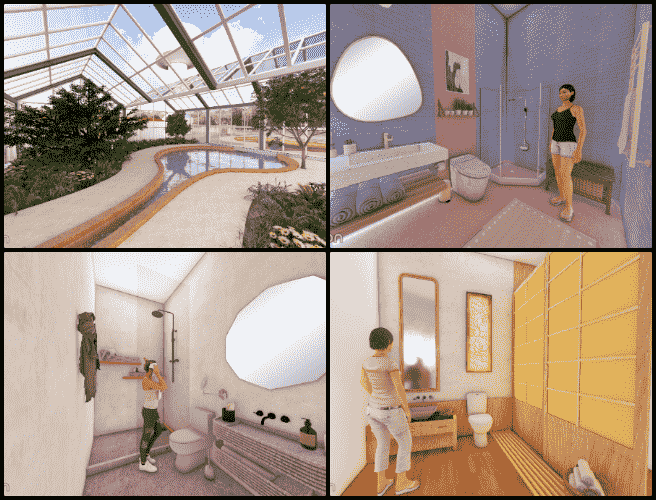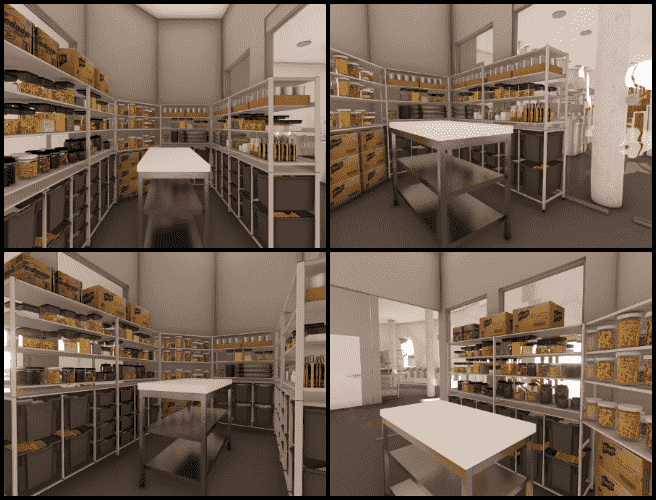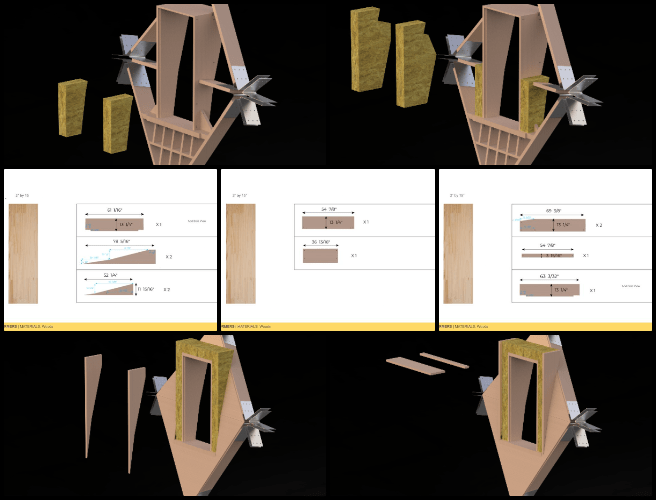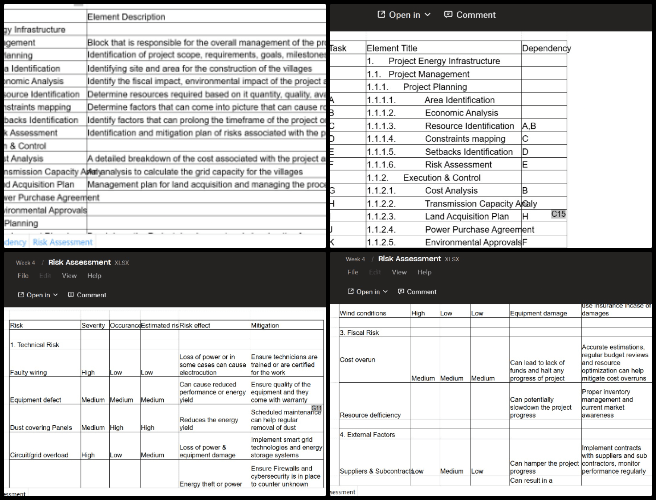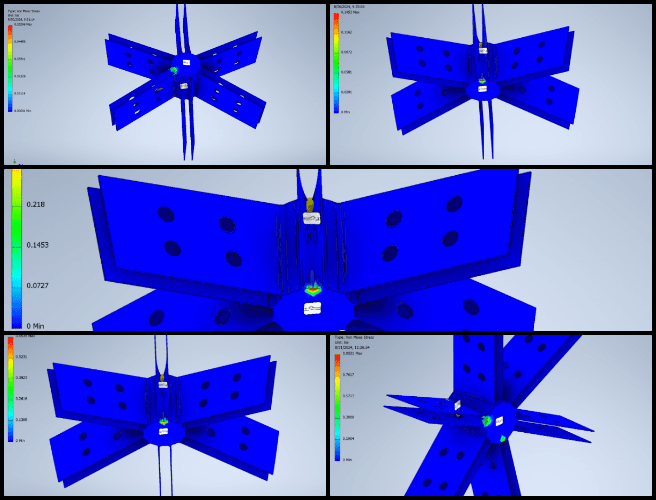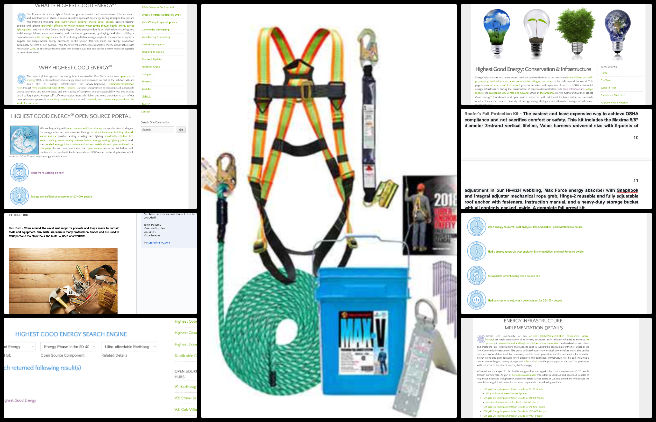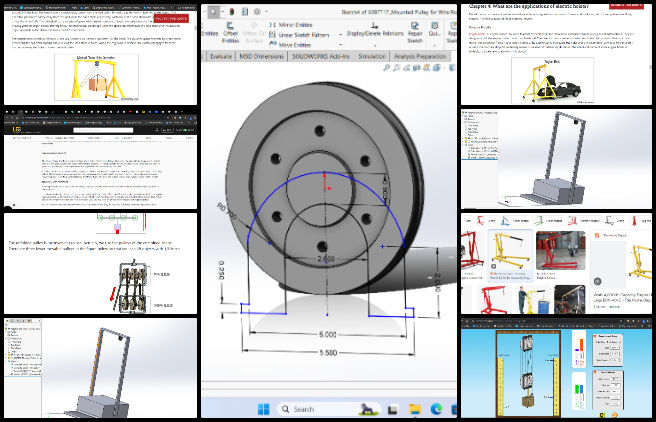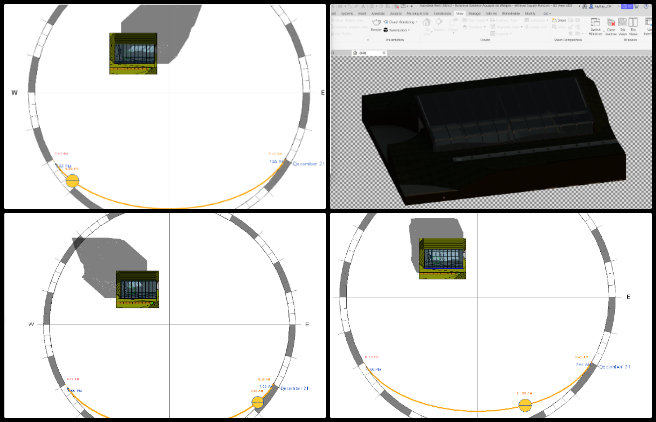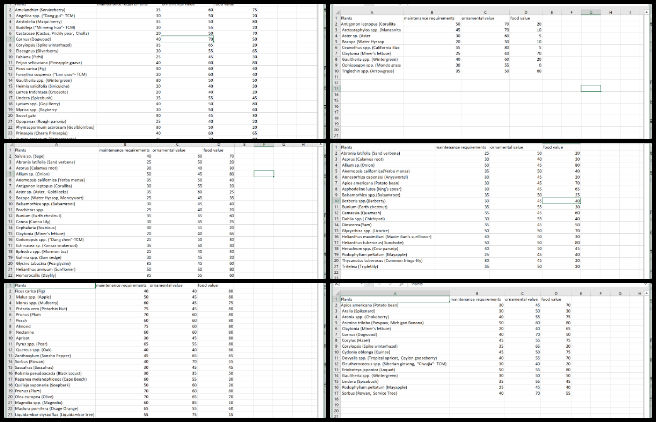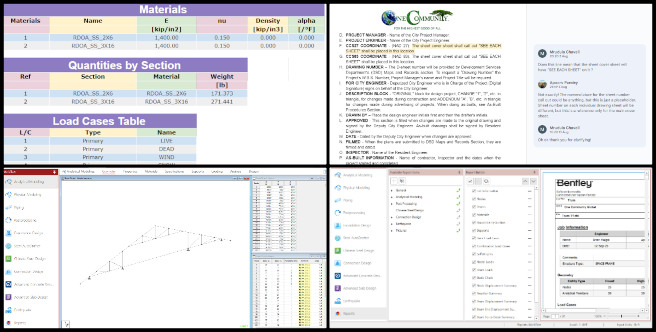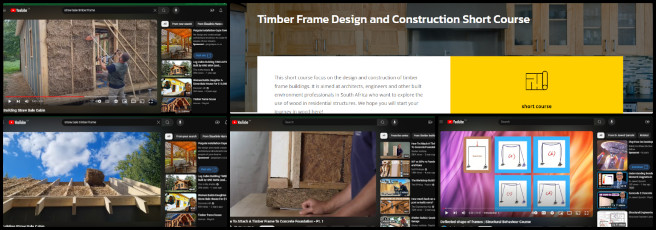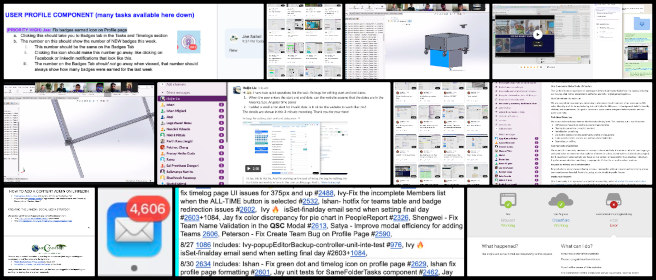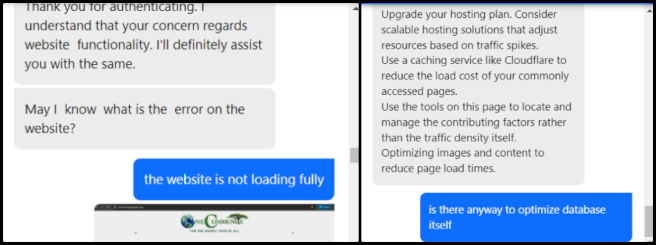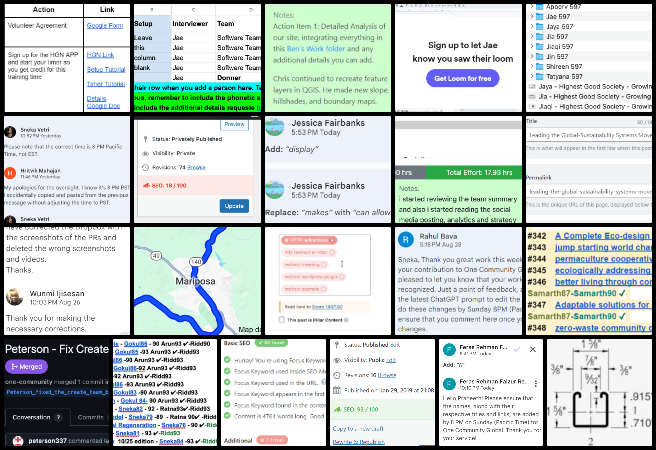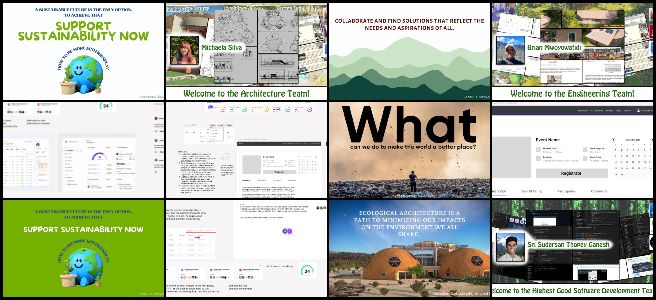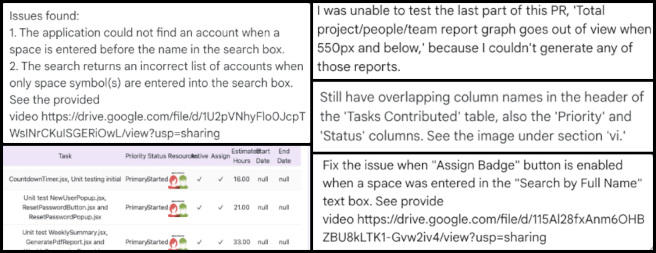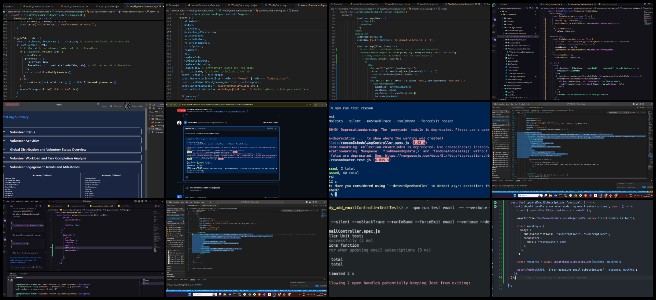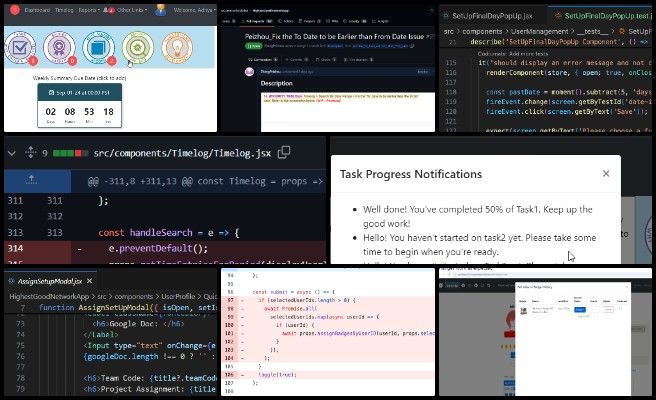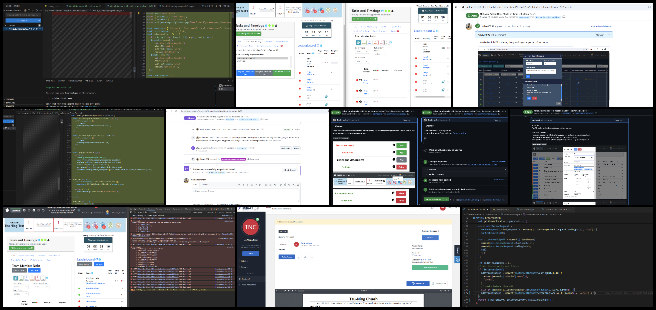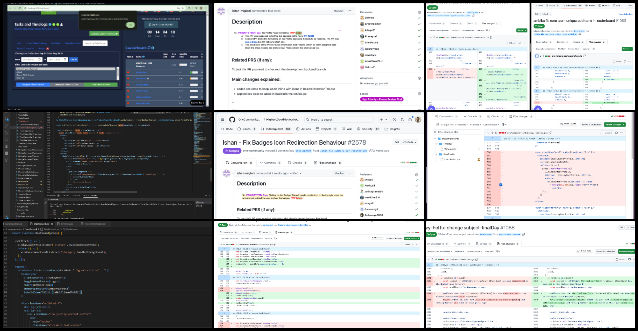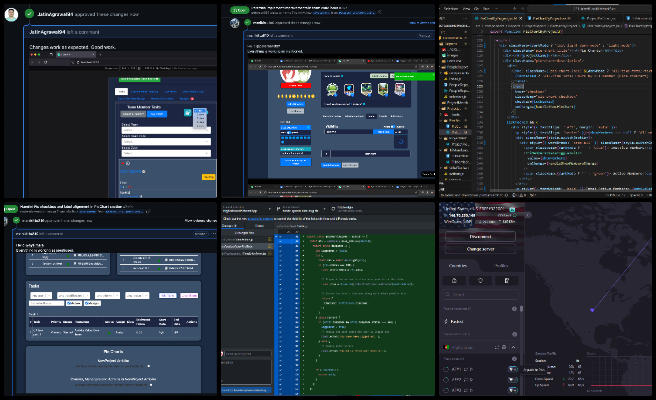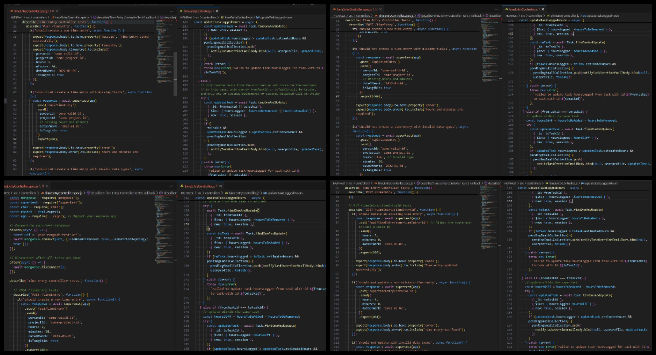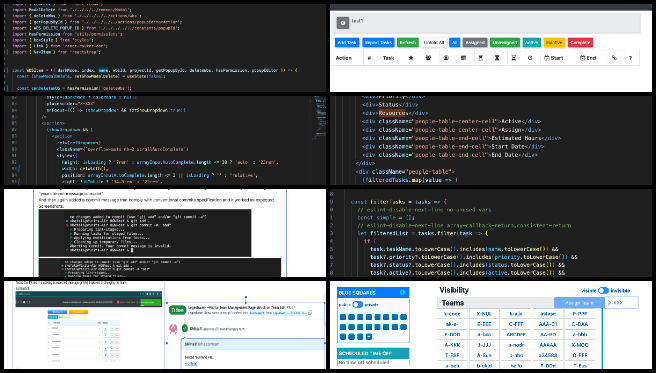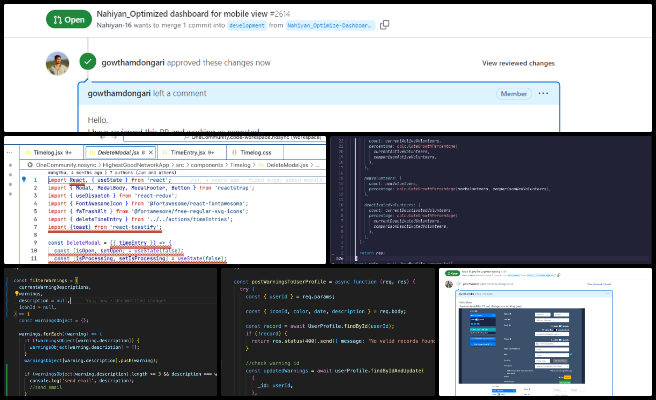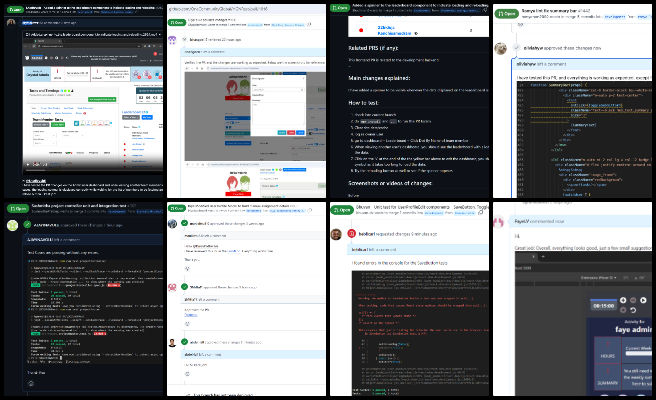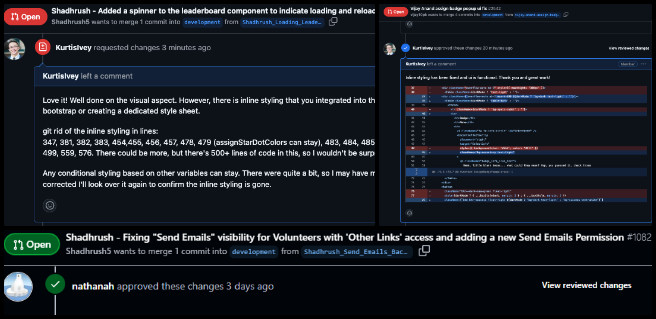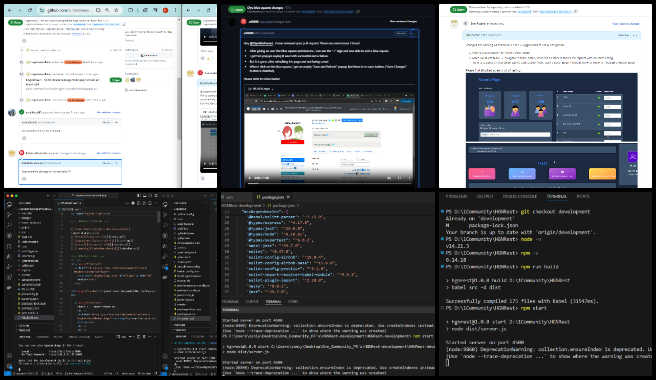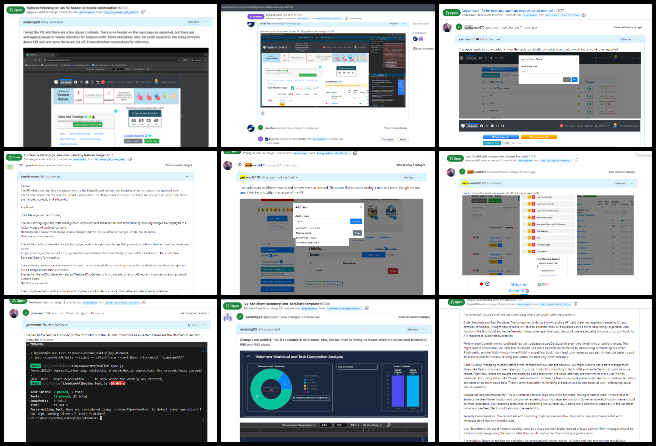Building a Cooperative Future – One Community Weekly Progress Update #598
At One Community, we are committed to building a cooperative future by implementing sustainable approaches to food, energy, housing, education, and economics. Our all-volunteer team is developing a self-replicating model designed to support global stewardship and fulfilled living. By open sourcing and free sharing every aspect of our work, we aim to create a worldwide network of teacher/demonstration hubs focused on regenerating our planet and evolving sustainability for “The Highest Good of All“.
- Here’s our project overview
- Here’s our world-change methodology
- Here’s how this becomes self-replicating
- Here’s how we are open source and free-sharing all the do-it-yourself designs
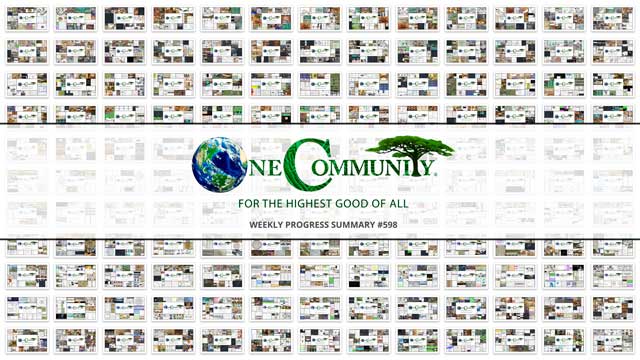
OUR MAIN OPEN SOURCE HUBS
Click on each icon to be taken to the corresponding Highest Good hub page.
One Community’s physical location will forward this movement as the first of many self-replicating teacher/demonstration communities, villages, and cities to be built around the world. This is the September 2nd, 2024 edition (#598) of our weekly progress update detailing our team’s development and accomplishments:
Building a Cooperative Future
One Community Progress Update #598
DONATE | COLLABORATE | HELP WITH LARGE-SCALE FUNDING
CLICK HERE IF YOU’D LIKE TO RECEIVE AN EMAIL EACH WEEK WHEN WE RELEASE A NEW UPDATE
YOU CAN ALSO JOIN US THROUGH SOCIAL MEDIA
ONE COMMUNITY WEEKLY UPDATE DETAILS
HIGHEST GOOD HOUSING PROGRESS
 One Community is building a cooperative future through Highest Good housing that is artistic and beautiful, more affordable, more space efficient, lasts longer, DIY buildable, and constructed with healthy and sustainable materials:
One Community is building a cooperative future through Highest Good housing that is artistic and beautiful, more affordable, more space efficient, lasts longer, DIY buildable, and constructed with healthy and sustainable materials:
- Learn about building a cooperative future: Our Upcoming Crowdfunding Campaign
- Learn about the different village models: 7 Sustainable Village Models
- Visit the open source portals for the first two: Earthbag Village OS Hub | Straw Bale Village OS Hub
This week, Adefola Madehin (Electrical Design Specialist) continued his work with Earthbag Village designs. Adefola completed the electrical design for the Earthbag Village 4 Dome Project. He completed partial lighting fixture design for the Earth Bag 4 Dome Village project’s first floor plan, following the completion of full electrical design services for the ground floor. The Earthbag Village is the first of 7 to be built as the housing component of One Community’s open source model for building a cooperative future. See some of his work in the collage below.
Anil Karathra (Mechanical Engineer) continued working on Vermiculture Toilet designs. Anil documented the FEA results, prepared tasks for the weekly team meeting, and reviewed the team management document. He participated in the team meeting and subsequently updated the task summary and action list. He went through the project documentation to create a detailed task list, including past and upcoming tasks, and discussed the list and overall project with Adil. He also refined the task list, updated the task tracker, added a new team member, and developed a concept for a dumping system that operates using a screw jack. Additionally, Anil created a complete SolidWorks assembly of the car jack-based bin dumping concept. This model aims to offer sustainable solutions that not only address waste processing but also enhance living standards by building a cooperative future. See below for some of the pictures related to this work.
Joseph Osayande (Mechanical Engineer) continued helping finish the Vermiculture Toilet engineering and design details. Joseph focused on identifying cylindrical winch archetypes and conducting cost comparisons. Quality of life improvements were made to the Unistrut stand, including the removal of the bottom piece, which had caused irregularities in the setup. Adjustments were made to the height and mates for greater precision. The chamber’s corner Unistruts were also converted to match those of the stand, simplifying the connection process. The opposite side of the chamber, which holds another drawer, was resized and aligned with the main side to ensure consistent setup, making the width differences negligible. This model aims to offer sustainable solutions that not only address waste processing but also enhance living standards by building a cooperative future. See below for some of the pictures related to this work, as it contributes to building a cooperative future through innovative and responsible design.
Loza Ayehutsega (Civil Engineer/Assistant Civil Engineer) completed another week working on the Earth Dam risk assessment and dam break hazard assessment. This week, Loza edited the report document. There was spelling and grammar error on the table under the title of “Dam safety incidents and emergency” literature review was made about Dam safety maintenance and inspection. These are critical to ensuring the structural integrity, functionality, and safety of dams. Proper maintenance and regular inspections help prevent potential failures, protect downstream communities, and preserve the environment. Ensuring dam safety measures and preparedness are a foundation of One Community’s open source earthworks as part of building a cooperative future. See the pictures below for examples related to her work.
Michaela Silva (Architect) continued working on finalizing the interior of the Earthbag Village 4-dome home design. Michaela integrated the built-in mounted TV system in the living room to ensure it met the lighting plan clearances. She also worked on the construction documents and sheet layouts for floor plans, building sections, and building elevations. Additionally, Michaela developed various diagrams to aid in construction and clarify the wall assemblies. The Earthbag village is the first of 7 villages to be built as part of One Community’s open source model for building a cooperative future. See her work in the collage below.
Yagyansh Maheshwari (Mechanical Engineer) continued helping finish the Vermiculture Toilet engineering and design details. Yagyansh focused on designing methods for efficiently dumping compost on the ground. He made modifications to the drawer and its materials in SolidWorks, a mechanism to assist with emptying the drawer, and improvements to the pulley design. He explored options for transferring the drawer to the dumping site, that met the required weight capacity, and performed torque calculations for tipping the drawer. Additionally, he checked the price and weight of PVC and steel for a 1 mm plate, compared the load capacity for rivets and screws, changed the direction of screws, and added the comparison of PVC vs. steel to the documentation. The Earthbag Village is the first of 7 to be built as the housing component of One Community’s open source model for building a cooperative future. See some of his work in the collage below.
Yuxing Xu (VFX Artist) continued working on making videos for the Earthbag Village 4-dome home design. Yuxing began work on the correct level of the 4-dome video project. He received the FBX file from Michaela, imported it into Blender for cleanup, and separated the mesh into different types based on materials. After testing the cleaned-up mesh in Unreal Engine, he resolved coordinate issues between the two programs. Yuxing then applied materials to various parts of the building and set camera angles for the architectural visualization, preparing it for further detailing of the ground plan and testing the camera path for the video. The Earthbag Village is the first of 7 to be built as the housing component of One Community’s open source model for building a cooperative future. See some of his work in the collage below.
AIRCRETE TEAM
The Aircrete Testing Team’s summary, covering their work on Aircrete Compression Testing was managed by John Sullivan (CBU Chemical Engineering Student) and includes Jonathan Crago (Civil Engineering Student), Preston Thompson (Civil Engineering Student), and Tad Matlock (Environmental Science Student). This week, Preston and the team completed compressing the samples with 2-week cure times, which included Aircrete Harry, Cement, and two variants with stucco. The testing revealed improved cracking behavior compared to previous trials, with the stucco samples showing a marked increase in compression strength. Jonathan collaborated with his team to complete the final testing of concrete cylinders, maintained regular cleaning of the lab, and assisted in diagnosing issues with the compression testing machine. He also engaged in brainstorming sessions to identify potential causes of specific types of cracks and failures. This collaborative approach is crucial as we continue building a cooperative future and strive for innovative solutions in our testing processes. Tad focused on finalizing his work on the new Aircrete webpage by adding detailed information about Domegaia’s mixing process and highlighting its unreliable results. He also created step-by-step guides for the two main mixes in an Aircrete tutorial section and proofread his work before submitting it for review. John initiated compression tests on the cylinders, completing those with a two-week cure time and beginning tests on those with a three-week cure time. He reorganized the lab to improve the efficiency of the compression testing process and completed tutorial videos for the Domegaia and Aircrete Harry methods. These aircrete tests contribute to the housing aspect of One Community’s open source model for building a cooperative future. See below for some of the pictures related to this work.
EARTHBAG VILLAGE 4-DOME ROOF TEAM
The Earthbag Village 4-dome Roof Team was managed by Khushboo Parmar (Project Manager) and includes Karthik Pillai (Volunteer Mechanical Engineer) and Yusuf Thanawala (Structural Engineer). The Earthbag Village is the first of 7 villages creating One Community’s open source model for building a cooperative future through sustainable housing. Khushboo researched various roofing materials with a focus on plastic lumber and studied Earthbag Structures using the book Earthbag Building: The Tools, Tricks and Techniques. She also handled administrative tasks, including scheduling and conducting interviews. Khushboo also manages Michaela Silva and Adefola Madehin. Karthik continued work on the 4-dome cluster project, concentrating on identifying a widely available and easily replicable roofing material. Yusuf researched roofing materials and roof deck designs for different sizes of Glulam wood in accordance with the California Building Code. He began working on CAD drawings of beams and columns and plans to create a Loom video for his colleagues. The discussion on deck material remains pending, and Yusuf searched for relevant articles to inform this aspect of the project. The Earthbag village is an integral part of One Community’s open source model for building a cooperative future. See their work in the collage below.
DUPLICABLE CITY CENTER PROGRESS
 One Community is building a cooperative future through a Duplicable and Sustainable City Center that is LEED Platinum certified/Sustainable, can feed 200 people at a time, provide laundry for over 300 people, is beautiful, spacious, and saves resources, money, and space:
One Community is building a cooperative future through a Duplicable and Sustainable City Center that is LEED Platinum certified/Sustainable, can feed 200 people at a time, provide laundry for over 300 people, is beautiful, spacious, and saves resources, money, and space:
- Learn about this building and it’s function in building a cooperative future: Duplicable City Center Open Source Hub
This week, Arnob Mutsuddi (Mechanical Engineer) continued working on Duplicable City Center structural engineering model and details. He initiated and completed iterations for 1000 lbs, 3000 lbs, and 5000 lbs in Autodesk Inventor to gain a better understanding of Failure Mode and Effect Analysis (FMEA). The stress of the hub connector increased proportionally as the load was increased. The results were satisfactory and the stress value was well under the stainless steel yield strength. The Duplicable City Center is a foundational part of One Community’s open-source model for building a cooperative future. See some of this work in the pictures below.
Charles Gooley (Web Designer) continued working on the Transition Food Self-sufficiency Plan. He completed the task of adding the Tools and Equipment for Open Source Construction master page by integrating tools from the non-powered tools section through the soil thermometer of the Highest Good Food Tools, Equipment, Materials/Supplies design document. This task involved resizing images and copying text from the design document, ensuring that the links are visible in the address bar when clicked. Some duplicates were identified and excluded from the update. The Duplicable City Center is a key component of One Community’s open-source framework designed for building a cooperative future. See below for some of the pictures related to this work.
Chris Blair (GIS Technician/Horticulturist) continued working with GIS data as part of One Community’s Permaculture Design that includes the location of the Duplicable City Center. He continued learning how to use QGIS, an open-source GIS software, with the goal of recreating all his previous work from proprietary software to improve future access to the data. While learning the software, he created raster images representing slope, hill shade, and solar aspects similar to his previous work in ArcGIS Pro. Chris also edited some of the GIS content to be published on the permaculture design webpage. The Duplicable City Center is a key element of One Community’s open-source framework for building a cooperative future. See the following pictures for examples of this work.
Clarice Gaw Gonzalo (Architect) continued her work on the Duplicable City Center renders and visualizations, focusing on edits needed from previous weeks, specifically working on the bathrooms of two themed renders. She updated the mirror texture and added the missing glass wall in the Neofuturistic render. Clarice also worked on the greenhouse, searching for fruit trees in both the Lumion library and SketchUp warehouse. She added a mango tree, a persimmon tree, and a lemon tree, adjusting their sizes to fit the space appropriately. She also rotated and positioned the trees to ensure they were correctly placed in specific locations within the greenhouse. As part of One Community’s open-source model, the Duplicable City Center plays a vital role in for building a cooperative future. Here are a few images connected to this work.
Faeq Abu Alia (Architectural Engineer) continued his work on the Duplicable City Center kitchen shelving and adding dry-storage food items. He focused on several key tasks. First, they completed the video for room 1, incorporating the latest feedback. Additionally, they worked on the video for room 2 using Lumion and made necessary corrections to the model in SketchUp. Finally, they worked on editing the kitchen shelves storage based on the most recent feedback received. One Community’s open-source initiative for building a cooperative future includes the Duplicable City Center as a central component. Check out the pictures below that show this work.
Nika Gavran (Industrial Designer) continued her work on the Duplicable City Center dormer window installation plans. She focused on expanding the final document for the dormer window instructions. Nika has been inputting text and images into Google Slides, organizing them in their respective places. She planned the placement of images to best showcase the order of assembly and rendered additional images for further instructions, specifically focusing on rock wool insulation and the exterior frame of the dormer window. Additionally, she refined the dimensions in some of the cutting instructions for wood pieces to ensure greater accuracy. As part of One Community’s open-source model, the Duplicable City Center plays a vital role in for building a cooperative future. The pictures below highlight some aspects of this work.
Panambur Rachan Rao (Project Manager) continued work on reviewing and organizing everything related to wrapping up the Highest Good Energy component. He finished the Work Breakdown Structure (WBS) dictionary, a crucial component in project management that provides detailed descriptions of each WBS element, clarifying scope, deliverables, and required tasks. He also completed a table of dependencies, outlining task interrelations and critical paths, essential for effective project scheduling and management. Additionally, Rachan prepared a Risk Assessment table, systematically identifying potential risks, evaluating their impact, and assessing their likelihood. He also conducted a meeting with the Duplicable City Center (DCC) team for their routine weekly update and prepared a report for the Executive Director, detailing project status, progress, and any issues requiring attention. The Duplicable City Center is an essential aspect of One Community’s open-source approach to for building a cooperative future. Check out the pictures below that show this work.
Tasmia Hasan (Design Engineer) continued her work on the structural engineering of the Duplicable City Center. She continued static stress analysis on V hub connectors, initially applying the load incorrectly. After a check-in with Arnob, the issue was corrected, and multiple iterations of the static analysis were conducted, with the files saved. Additionally, Tasmia participated in a meeting with Rachan and Arnob, and a short file was prepared to compare the results. One Community’s open-source initiative for building a cooperative future includes the Duplicable City Center as a central component. The pictures below highlight some aspects of this work.
HIGHEST GOOD FOOD PROGRESS
 One Community is building a cooperative future through Highest Good food that is more diverse, more nutritious, locally grown and sustainable, and part of our open source botanical garden model to support and share bio-diversity:
One Community is building a cooperative future through Highest Good food that is more diverse, more nutritious, locally grown and sustainable, and part of our open source botanical garden model to support and share bio-diversity:
- Learn about the structures: Hoop House Hub | Aquapini & Walipini Open Source Hub
- See what we’ll be growing and building a cooperative future: Gardens & Hoop Houses | Large-scale Structures | Food Forest | TA
Hayley Rosario (Sustainability Research Assistant) continued her work on the Highest Good Food project. She researched various structural systems and pulley options. Although no pulley simulator met the weight requirements for the drawer, she found a chart detailing the number of pulleys needed and their impact on the load. Hayley began designing a basic structure in SolidWorks and adjusted the dimensions of a ceiling-mounted pulley found on McMaster. The Highest Good Food initiative is a key component of One Community’s open source plans, dedicated to building a cooperative future. See her work in the collage below.
Jay Nair (BIM Designer) continued working on Aquapini and Walipini Planting and Harvesting. He focused on refining the lighting plans for Walipini 1 and Walipini 2 by addressing specific lighting requirements for various plant species while ensuring adherence to sustainability standards. This involved selecting appropriate fixtures and conducting energy calculations. He also faced challenges in interpreting lumen and wattage needs, importing IES files, and configuring photometric settings to accurately simulate lighting conditions in Revit. Additionally, Jay worked on optimizing solar studies and adjusting energy requirements for different fixtures, considering natural light penetration and overall energy consumption. The Highest Good Food initiative is a key component of One Community’s open source plans, dedicated to building a cooperative future. See his work in the collage below.
Ziyi Chen (Landscape Designer) continued working on the design of the outdoor spaces for the Aquapini and Walipini Planting and Harvesting structures. She evaluated six types of plants by assigning ratings for maintenance requirements, ornamental value, and food value. Attempts to create a ternary diagram were hindered by insufficient reference data for some variables. Consequently, the evaluation method was adjusted to focus on the plants’ needs for soil pH and water/sunlight. Given the site’s low-lying nature, which leads to retention ponds during rainy periods, Ziyi is selecting plants with strong water resistance. The Highest Good Food initiative is a key component of One Community’s open source plans, dedicated to building a cooperative future. See her work in the collage below.
HIGHEST GOOD EDUCATION PROGRESS
 One Community is building a cooperative future through Highest Good education that is for all ages, applicable in any environment, adaptable to individual needs, far exceeds traditional education standards, and more fun for both the teachers and the students. This component of One Community is about 95% complete with only the Open Source School Licensing and Ultimate Classroom construction and assembly details remaining to be finished. With over 8 years of work invested in the process, the sections below are all complete until we move onto the property and continue the development and open sourcing process with teachers and students – a development process that is built directly into the structure of the education program and everything else we’re creating too:
One Community is building a cooperative future through Highest Good education that is for all ages, applicable in any environment, adaptable to individual needs, far exceeds traditional education standards, and more fun for both the teachers and the students. This component of One Community is about 95% complete with only the Open Source School Licensing and Ultimate Classroom construction and assembly details remaining to be finished. With over 8 years of work invested in the process, the sections below are all complete until we move onto the property and continue the development and open sourcing process with teachers and students – a development process that is built directly into the structure of the education program and everything else we’re creating too:
- Program Overview: Education Open Source Hub
- How the components work together in building a cooperative future: How to use the Education for Life Program
- Lesson Plans for Life – Lesson Plans How-to
- Foundations of Outstanding Leaders, Teachers, and Communicators
- Curriculum for Life
- Teaching Strategies for Life
- Learning Tools and Toys for Life
- Evaluation and Evolution
This week, Apoorv Pandey (Mechanical Engineer) continued helping with the engineering details for the Ultimate Classroom part of the Highest Good Education component. He worked on the second draft of the Structural Engineering Report for the Ultimate Classroom Project. He focused on formatting the report to ensure it was easily understandable by engineers and laypersons, which involved clarifying certain sections and improving captions for figures and tables. Apoorv started using other published pages on One Community’s website as references for this task. The One Community model of combining forward-thinking education with sustainably built classrooms like this is an excellent example of building a cooperative future. This approach truly exemplifies building a cooperative future by creating environments that foster collaboration and innovation. See the collage below for his work.
Brian Mwoyowatidi (Graduate Structural Engineer) continued helping with the engineering details for the Ultimate Classroom of the Highest Good Education component. He focused on understanding structural behavior, including the deflected shapes of frames and members under loading, the various boundary conditions, reactions, and stiffness in members. He also explored the connection between reinforced concrete foundations and timber-framed walls, relevant to the Ultimate Classroom. Additionally, Brian worked on a short course in Timber Design & Construction and added a resource file for One Community’s open-source Highest Good Education. The One Community model of combining forward-thinking education with sustainably built classrooms like this is an excellent example of building a cooperative future. See the collage below for his work.
HIGHEST GOOD SOCIETY PROGRESS
 One Community is building a cooperative future through a Highest Good society approach to living that is founded on fulfilled living, the study of meeting human needs, Community, and making a difference in the world:
One Community is building a cooperative future through a Highest Good society approach to living that is founded on fulfilled living, the study of meeting human needs, Community, and making a difference in the world:
- Read the Highest Good society overview: Highest Good Society
- Learn about the model for fulfilled living and sharing: A Day in the Life
- Learn about the 4 economic models: RBE | For-profit | Non-profit | Entrepreneurship
- Learn about our open source community collaboration and management software: The Highest Good Network
This week, the core team completed over 60 hours managing One Community’s volunteer-work review not included above, emails, social media accounts, web development, new bug identification and bug-fix integration for the Highest Good Network software, and interviewing and getting set up new volunteer team members. They also shot and incorporated the video above that talks about building a cooperative future and how building a cooperative future is a foundation of the bigger picture of everything One Community is doing. The image below shows some of this work.
Venkata Jaya Pavan Naru (Network and Cybersecurity Engineer) worked with Bluehost support to address loading issues, initially focusing on database repairs as Bluehost did not provide a permanent solution. He planned to investigate database optimization further using procmon. During a customer support call, he discussed potential server issues and error 524 with a representative named Jin, who recommended using a dedicated server with a custom nameserver to diagnose the problem, leading to ticket i-16605859. Additional calls with customer support revealed the need to switch the DNS A server of onecommunityglobal.org from Cloudflare to Bluehost for further investigation. They also explored Cloudflare for the root cause of the 524 error, adjusted settings, and intended to monitor the server and database performance, particularly during overload situations. This work helps One Community’s mission of building a cooperative future. The following images show his work for the week.
ADMINISTRATION TEAM
The Administration Team’s summary, covering their work administrating and managing most of One Community’s ongoing process for building a cooperative future was managed by Sneka Vetriappan (Data Analyst) and includes Feras Rehman (Data Analyst), Hritvik Mahajan (Data Analyst), Ivy Yuwei Li (Project Manager and Team Administrator), Jessica Fairbanks (Administrative Assistant), Kishan Sivakumar (Administative Assistant and Software Team Manager), Michael Juma (Administrative Assistant), Mrudula Chavali (Administrative Assistant and Data Analyst), Nimit Nag (Team Administrator), Olawunmi “Ola” Ijisesan (Administrative and Management Support), Praneeth Reddy Guduru (Data Analyst), Rachna Malav (Data Analyst), Rahul Bavanandan (Data Analyst), Ratna Meena Shivakumar (Data Analyst and Admin), Riddhisha Chitwadgi (Administrative Assistant), Saumit Chinchkhandi (Administrative Assistant and Software Engineer), T R Samarth Urs (Data Analyst), Venkat Reddy Mankala (Data Analyst and Team Administrator), Vibhav Chimatapu (Data Analyst/Admin Assistant), Viktoriia Zakharova (Administrative Assistant) and Zuqi Li (Administrative Assistant and Economic Analyst). This week, Feras handled OC Administration tasks, including time log management, feedback, and tutorial development, while reviewing entries for accuracy and updating the review table. Hritvik created team collages and summaries, provided feedback to various team members, tested PRs, and began working on Twitter-related tasks. Ivy focused on the Food Procurement Plan for Mariposa, California, incorporating various logistical and strategic details, and updated Dropbox and blog content. Jessica reviewed GIS work, carried out administrative tasks, and progressed on the Food Infrastructure Rollout plan, all contributing towards building a cooperative future. Kishan worked on SEO optimization, reviewing and finalizing SEO pages. Michael prepared team summaries for Reactonauts and Skye, evaluated admin feedback, and reviewed blogs and documents. Mrudula scheduled interviews, worked on software product testing, and provided training input. Nimit completed onboarding tasks, prepared collages, and participated in training processes. Ola reviewed PR team managers’ work, tracked progress reports, scheduled social media content, and oversaw admin training. Praneeth managed administrative and team management tasks, optimized SEO for blogs, and reviewed training documents. Rachna scheduled and handled interviews, integrated feedback on SEO pages, and assigned new tasks. Rahul worked on onboarding and training documentation, implementing feedback. Ratna prepared weekly summaries and collages, scheduled interviews, and updated blogs and social media posts, playing a role in building a cooperative future. Riddhisha reviewed and optimized Blog #597, incorporating feedback and working on SEO. Saumit interviewed potential volunteers, performed frontend testing, and communicated with developers. Samarth managed the PR review team, evaluated their work, and summarized their efforts in a blog post. Sneka focused on OC Administration tasks, including managing time logs, providing feedback, following up on previous comments, guiding new teammates, adding weekly summaries and collages to the webpage, and reviewing content. Venkat read training materials, studied social media strategy, and reviewed the team summary. Vibhav reviewed PR Team’s work, created summaries and collages, and achieved great SEO optimization results. Viktoriia completed onboarding, reviewed summaries, provided feedback, and demonstrated understanding of update publishing standards. Zuqi organized summaries for the Graphic Design and Alpha Teams, reviewed and optimized blogs, and assisted with adjustments. One Community’s model for building a cooperative future includes developing and maintaining a supportive administration team like this. You can see the work for the team in the image below, showcasing our commitment to building a cooperative future.
GRAPHIC DESIGN TEAM
The Graphic Design Team’s summary was managed by Zuqi Li (Administrative Assistant and Economic Analyst) and included Junyuan Liu (Graphic Designer, UI/UX Designer), Jyotsna Venkatesh (Graphic Designer) and Maomao Ding (UI/UX Designer), covering their work on graphic designs for building a cooperative future. This week, Junyuan focused on creating social media images, completing one and making progress on others. He also worked on the page structure, interaction, and typography for the event page in HGN Phase 3, advancing the calendar, overall evaluation, and participant sections, including their placement and display on the page. Jyotsna concentrated on developing brand book guidelines, creating typography and color components in Figma, and adding relevant information such as logos, color schemes, and typography details to the brand book in Google Docs. She also created graphic design images based on the Social Media Images Excel sheet and made edits in response to feedback. Maomao created three announcement bio pages, with one featuring a new template that included a software icon and background. She also contributed to the HGN app Phase III design by creating a wireframe for the “logging used resources” feature, referencing other designers’ UI styles and structuring the page for clarity and understandability. See the Highest Good Society pages for more on how this contributes to building a cooperative future. See the collage below to view some of their work.
HIGHEST GOOD NETWORK PROGRESS
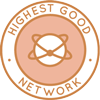 One Community is building a cooperative future through open source Highest Good Network® software that is a web-based application for collaboration, time tracking, and objective data collection. The purpose of the Highest Good Network is to provide software for internal operations and external cooperation. It is being designed for global use in support of the different countries and communities replicating the One Community sustainable village models and related components.
One Community is building a cooperative future through open source Highest Good Network® software that is a web-based application for collaboration, time tracking, and objective data collection. The purpose of the Highest Good Network is to provide software for internal operations and external cooperation. It is being designed for global use in support of the different countries and communities replicating the One Community sustainable village models and related components.
This week, the core team continued their work on the Highest Good Network PRs testing, confirming the fixed PRs and resolving various user interface (UI) bugs. The resolved HGN PRs include optimization of the Project Page (PR#2013), UI improvements on the Permissions Management Page for 375px and up (PR#2446), implementation of a toast notification when a user is already in a team (PR#2332), increased margins between cells in the Volunteering Times tab (PR#2545), the addition of color indicators for less-than-minimum hours logged on the Weekly Summaries Reports page (PR#2270), resolution of the timelog tab reverting to the user instead of staying on the person being viewed (PR#2262), redirection of users to their dashboard upon exiting the view dashboard feature (PR#2538), addition of a loading spinner when Project members are loading (PR#2382), and prevention of picture additions in timelog or summary fields (PR#2523). These updates contribute to building a cooperative future by enhancing user experience and operational efficiency. The issues that were not resolved include overlapping column names in the header of the ‘Tasks Contributed’ table on the People Reports page (PR#2005), untested UI issues on the Reports Page for 375px and up (PR#2396), enabling of the ‘Assign Badge’ button when space is entered in the “Search by Full Name” text box (PR#2539), incorrect search functionality in Badge Assignment when space is entered before the name (PR#2539), new roles not appearing on the Permissions Management page (PR#2386), and the generation of Total Project/People/Team reports with 0 hours (PR#2268). Additionally, they used the CoreTeam Tester account to test the fix for Core Team email text not showing the correct hours a person owes for a unique Core Team role and found that the email received in week 4 still displayed incorrect “-” hours. We continue to focus on building a cooperative future through iterative improvements and user-centric solutions. See the Highest Good Society and Highest Good Network pages for more on how this relates to building a cooperative future. The collage below shows some of their work.
ALPHA SOFTWARE DEVELOPMENT TEAM
This week, the Alpha Team’s summary, covering their work on the Highest Good Network software was managed by Lin Khant Htel (Frontend Software Developer) and includes Anand Seshadri (Software Engineer), Carlos Gomez (Full-stack Software Developer), Jordy Corporan (Software Engineer) and Logeshwari Renu (Software Engineer). The Highest Good Network software is how we will manage and measure our processes for building a cooperative future across our social architecture, construction, production, and maintenance processes. Lin reviewed and approved PR #1089, becoming familiar with the codebase and unit testing related to the pull request, and reviewed the weekly summaries, photos, and videos submitted by his Alpha team members. Carlos worked on Jae’s request for a “Volunteer Roles and Team Dynamics” wrapper, began creating the AnniversaryCelebrated Component for the “Anniversary Celebrated in Total Org Summary” page, and tested the totalOrgSummary state in the Store using the useDispatch and useSelector hooks from reactRedux. He also used Postman and MongoDB Compass to explore adding backend features for retrieving profilePic, email, and createDate for future frontend integration. Anand addressed fixes for the Dark Mode feature in the Reports Modal, resolving issues with text visibility and button alignment when switching modes, aligning elements in the Info Modal, and adding missing modal footers. Jordy did his part building a cooperative future as he continued working on unit tests for the emailController, completing tests for the first function. Logeshwari created Pull Requests #PR2627 and #PR1087 to address responsiveness issues on the Team Management Page during team edits and established a Git branch for improving the loading of the Weekly Summaries Report. She modified the toggleTab method to ensure dynamic content loading upon interaction and implemented conditional rendering to enhance initial loading performance by loading tab content only when necessary. See the Highest Good Society and Highest Good Network pages for more on how this relates to building a cooperative future. View some of the team’s work in the collage below.
BINARY BRIGADE SOFTWARE DEVELOPMENT TEAM
The Binary Brigade Team’s summary overseeing advancements in the Highest Good Network software was managed by Vijay Anand Pandian (Full Stack Software Engineer) and includes Aaryaneil Nimbalkar (Software Developer), Aditya Sure (Software Engineer), Deepthi Kannan (Software Engineer), Huijie Liu (Software Engineer), Peizhou Zhang (Software Engineer), and Vigneshwar Muriki (Software Engineer). The Highest Good Network software is how we’ll be managing and objectively measuring our process for building a cooperative future through our social architecture, construction, production, and maintenance processes. This week, Aaryaneil developed unit tests for the Add Teams Auto Complete component, addressing scenarios such as selecting a team from the dropdown, creating a new team when no match is found, auto-focusing the input on mount, filtering the team list case insensitively, handling special characters in search, and rendering the input field when no teams are available. Unit tests were also worked on for the set up final day pop up component, including tests for rendering the modal with the correct title and buttons, calling on Close when the Close button is clicked, displaying an error if the selected date is not in the future, and ensuring on Save is called with the correct date if it is valid. Additional tests checked for dark mode styles, the correct rendering based on the open prop, and proper handling of errors and date updates. Aditya implemented a bell notification system for task deadline completions in the HGN Software Development project, facing and overcoming coding challenges before completing the task and submitting a pull request. Deepthi identified a bug, documented it, and worked on fixing an issue with the media folder link in PR 2554. Huijie addressed bugs related to end date user input and worked on chart updates and meeting scheduling features. Peizhou worked on resolving issues related to dismissing blue squares and sending related emails, with ongoing efforts to complete the task. Vigneshwar refactored code for performance improvements, introduced a custom hook for data fetching, optimized rendering, implemented lazy loading, and enhanced error handling. Vijay developed a feature for assigning badges to multiple users, addressed bugs affecting badge assignment, and made changes based on PR feedback. See the Highest Good Society and Highest Good Network pages for more on how this relates to growing the building a cooperative future. View some of the team’s work in the collage below. See the collage below for the team’s work this week.
BLUE STEEL SOFTWARE DEVELOPMENT TEAM
The Blue Steel Team’s summary, presenting their work on the Highest Good Network software was managed by Jingyi Jia (Software Engineer, Team Manager), and includes Parth Rasu Jangid (Software Developer), Ramakrishna Aruva (Software Engineer), Tzu Ning “Leo” Chueh (Software Engineer), and Vishavdeep Kaur (Full stack Developer). The Highest Good Network software is how we’ll be managing and objectively measuring our process for building a cooperative future through our social architecture, construction, production, and maintenance processes. This week, Jingyi focused on enhancing software development for HGN, resolving a bug affecting npm tests for a new pull request and reviewing three pull requests”#2622, #2624, and #2608″to provide feedback aimed at improving the project’s codebase. Additionally, Jingyi reviewed four more pull requests”#2620, #2621, #2627, and #2589. Parth continued covering unit test cases for the endpoints of the task controller and reviewed several pull requests, including PR 1016+2248, PR 1062, PR 2599, and PR 2624, preparing to complete taskController and resolve conflicts in his open PRs. Ramakrishna focused on converting methods in class components to reusable functions using ES6 arrow functions, completing most conversions. Vishavdeep revisited PR2488 to address an ongoing issue and tested and reviewed multiple PRs”PR-2629, PR-2624, PR-2622, PR-2618, PR-2615, and PR-2617″providing comments and approvals. Tzu Ning troubleshooted a WebSocket connection issue, adding logging to trace message flow and testing various payload structures to ensure proper communication with the server. See the Highest Good Society and the Highest Good Network pages to learn more on how their work contributes to building a cooperative future. See below to view images of their work.
CODE CRAFTERS SOFTWARE DEVELOPMENT TEAM
The Code Crafters Team’s summary, covering their work on the Highest Good Network software, was managed by Summit Kaushal (Backend Software Developer) and includes Ambika Kabra (Software Engineer), Chetan Sunku (Software Engineer), Ishan Miglani (Software Engineer), Niketha Anand (Software Engineer), Pranay Netha Guda (Software Engineer), Pavan Swaroop Lebakula (Software Engineer), Shadhrush Swaroop (Software Engineer), and Xiaoyu (Ivy) Chen (Software Engineer). The Highest Good Network software is how we’ll manage and objectively measure our process for building a cooperative future through our social architecture, construction, production, and maintenance processes.
This week, Ivy focused on resolving several technical issues, including identifying and addressing Faye’s installation issues on both development and test environments related to a specific pull request and troubleshooting why Tatyana was unable to receive certain emails, specifically issue 958. Ivy completed all cache mocking CRUD functions, wrote router tests, and addressed a timeout error related to the findOneById and Update functions, along with fixing subject and rendering issues related to the user profile, and writing and passing a unit test for the email sender. Niketha worked on repositioning the reload button from the right side to the top of the interface, making adjustments to the layout, which is still ongoing. Shadhrush worked on a frontend pull request for the “Leaderboard Loading/Reloading with a Spinner” feature, made necessary changes, pushed the PR, and addressed merge conflicts and comments to ensure it was merged to the development branch. All these efforts contribute to building a cooperative future through enhanced functionality and seamless user experience.
Pavan modified a previous CSS file, tested the alignment of the time-off icon across multiple screen resolutions, and plans to submit a pull request. Ambika reviewed and approved PR 2613, addressing a bug related to the Core Team’s blue square letter and unique hours addition, implemented changes to show additional unique hours in the timelog, created relevant frontend and backend PRs, assisted Shuddhendu with project setup, and worked on fixing and adding a popup icon to the Weekly Summaries Reports page, debugging previous PRs and examining the differences between the main and development branches. Ishan addressed a bug related to the green active/inactive dot on the user profile page, investigated and fixed issues with prop management on the UserProfile page, created and merged PR#2629, reviewed documentation for Phase 2, and focused on identifying issues in the BMDashboard components for the next phase, building a cooperative future.
Chetan completed the weekly summary UX issue task, created a git branch, raised a pull request for it, and began working on a bug related to task time updates, where updated time is not immediately reflected on the task. Pranay reviewed several pull requests, identified and documented front-end bugs, and monitored the status of pull requests raised, ensuring their proper integration. building a cooperative future, Summit assisted team members, troubleshooted issues within the Badge Bugs project, identified a potential root cause related to caching mechanisms causing deleted badges to appear incorrectly in the featured badges section, and reviewed and tested several pull requests, including a task related to the timelogs tab, which was successfully merged and closed. See the Highest Good Society and Highest Good Network pages for more on how this relates to building a cooperative future. The collage below shows some of this work.
DEV DYNASTY SOFTWARE DEVELOPMENT TEAM
The Dev Dynasty Team’s summary, covering their work on the Highest Good Network software, was managed by Praneeth Reddy Guduru (Data Analyst) and includes Howie Miao (Software Engineer), Jatin Agrawal (Software Engineer), Manikrishna Sanganabatla (Software Engineer), Nandini Yelmela (Software Engineer), and Sailavanya Narthu (Software Engineer). The Highest Good Network software is how we’ll manage and objectively measure our process for building a cooperative future through our social architecture, construction, production, and maintenance processes.
This week, Howie addressed the system date bug related to timelogs, focusing on collecting user timezones and testing four different libraries, but found that all available libraries relied on system time. He explored API-based solutions, but they proved impractical for the project’s scale, leading him to consider using server time despite limited experience in this area. Howie sought assistance from peers during the process. Jatin worked on pull requests and bug fixes, addressing several PRs, including #2624, #2622, and #2620, where he fixed an issue with data updates requiring multiple page refreshes. Manikrishna reviewed multiple pull requests from the Highest Good Network App and HGNRest repositories, identifying and noting a problem with the hover text of icons overlapping titles in volunteer profiles and reviewing a site service issue reported on August 27th. Nandini focused on updating the color of specific text labels within a React component displaying pie chart data, ensuring compatibility with both light and dark modes, contributing to building a cooperative future through thoughtful and inclusive design improvements. She updated the “All-Time Total Hours by Member” label but faced challenges in locating another label that needed color updates and continued to review the JSX code. Sailavanya fixed an issue with the ‘Selecting Featured Badges’ feature, ensuring selected badges display correctly without errors. She uploaded the changes to Git but encountered failing cases that remained unresolved and sought help from the coding team. See the Highest Good Society and Highest Good Network pages for more on how this relates to building a cooperative future. The collage below shows some of this work.
EXPRESSERS SOFTWARE DEVELOPMENT TEAM
The Expressers Team’s summary, covering their work on the Highest Good Network software, was managed by Christy Guo (Software Engineer) and includes Mohammad Abbas (Software Engineer). The Highest Good Network software is how we’ll manage and objectively measure our process for building a cooperative future through our social architecture, construction, production, and maintenance processes. This week, Christy focused on enhancing the unit tests and integration tests for the teamController, particularly on DELETE operations using supertest and chai to validate API behavior. Her tests covered the creation, updating, and deletion of time entries, as well as handling invalid inputs and non-existent entries. She ensured that the test environment connected to a test database before running and disconnected after completion. Mohammad focused on refining the badge management’s frontend and spent time to enhance its functionality. See the Highest Good Society and Highest Good Network pages for more on how this relates to building a cooperative future. See the collage below for the team’s work this week.
MOONFALL SOFTWARE DEVELOPMENT TEAM
The Moonfall Team’s summary, covering their work on the Highest Good Network software was managed by Lu Wang (Software Engineer) and includes Anne Zhang (Software Engineer), Shefali Mittal (Volunteer Software Engineer), Shrada Chellasami (Software Engineer), and Yili Sun (Software Engineer). The Highest Good Network software is how we’ll be managing and objectively measuring our process for building a cooperative future across our social architecture, construction, production, and maintenance processes. This week, Anne worked on resolving issues related to the people report page display at 375px and above, specifically addressing overlapping text when resizing the screen and the misalignment of the “End Date” column under the “Task” column during resizing. She is exploring past solutions to find a fix for this bug. Lu focused on writing and refining unit tests for the `PeopleReport/components/PeopleTasksPieChart.jsx` component, redesigning test cases for the selector functions to align with the latest data filtering and processing requirements. She addressed rendering and data binding issues within the chart, improving performance and visual accuracy, and expanded test cases to cover more edge cases, enhancing overall test coverage, particularly in state management and asynchronous data handling errors, while also completing her team management responsibilities, including reviewing teammates’ work. Shefali reviewed the HGN Phase 1 bug document, explored HGN Phase 3 documentation, checked APIs, reviewed Node.js code, and examined Phase 2 documentation related to Building Manager responsibilities, all while building a cooperative future through collaborative and meticulous efforts. She also reviewed design functionalities in Figma for both Phases 2 and 3, consulted Jae for further action items, and requested access to MongoDB. Shefali tested and approved several pull requests (PRs), including PR 804, PR 1089, PR 2672, PR 1087, PR 1038, PR 2475, PR 2608, PR 2622, PR 2620, and PR 1085, making note of issues such as slow processing due to VPN use. Shrada made updates to the Admin and Owner login functionality in the Teams tab under any user profile, allowing text entry in the input field, which applies to the individual user and is reflected on both the Teams tab and the Reports page under Weekly Summaries. She also implemented a dropdown option displaying all current codes in use, though she is addressing some errors in these updates, all while contributing to building a cooperative future. Yili worked on fixing issues related to the WBS Management Page, specifically addressing a problem where the timer would stop when entering the WBS management page of a project with the timer on. She tested the bugs on the development branch, identified the root cause, and is currently working on a fix. See the Highest Good Society and Highest Good Network pages for more on how this relates to building a cooperative future. Below is a collage for the team’s work.
REACTONAUTS SOFTWARE DEVELOPMENT TEAM
The Reactonauts Team’s summary, covering their work on the Highest Good Network software, was managed by Changhao Li (Software Engineer). It included Aishwarya Ramesh (Software Engineer), Dhairya Mehta (Software Engineer), Diya Wadhwani (Software Developer), Hetvi Patel (Software Engineer), Gmon Kuzhiyanikkal (Software Engineer), Jinxiong You (Software Developer), Nikhil Pittala (Software Engineer), Peterson Rodrigues dos Santos (Full-Stack MERN Stack Developer), Vijeth Venkatesha (Full Stack Developer), and Yash Agrawal (Software Engineer). The Highest Good Network software is how we’ll manage building a cooperative future across social architecture, construction, production, and maintenance processes. This week, Aishwarya implemented critical frontend and backend logic for project components, ensuring smooth integration and resolving issues during testing.
Changhao focused on unit test development, team management, and addressing development-related issues, particularly with `timeentry.jsx`, while reviewing and updating previous pull requests. Dhairya tackled the “Fix Projects find user function” task by identifying the root cause and creating a sort and search function to enhance user assignment processes. Diya resolved several bugs in both Phase 1 and Phase 2 environments, including issues with project details and dashboard tabs, aligning with the goal of building a cooperative future. Gmon fixed a bug related to task dropdowns on the Projects Reports page, submitted GitHub PR 2606, and prepared for future tasks by familiarizing himself with the project architecture.
Moreover, Hetvi worked on search engine forms, data entry, SQL query arrays, and database imports. Jinxiong reviewed five pull requests, addressed issues with unit tests and dropdown menus, and identified bugs in the HGN Apps. Nikhil made the badges earned icon on the Profile page interactive and reviewed three pull requests. Peterson enhanced the “Teams” tab in the “View Profile” section, improved the “Add Members” modal, and addressed a bug related to the “Visible” button, all contributing to building a cooperative future.
In addition, Vijeth focused on bug hunting and supported a team member with codebase setup. At the same time, Yash transitioned from Surge CDN, deployed a GNU v2 license, added a code of conduct, and addressed a server-based routing error through a pull request. See the Highest Good Society and Highest Good Network pages for more on how this relates to building a cooperative future. See the collage below for the team’s work this week.
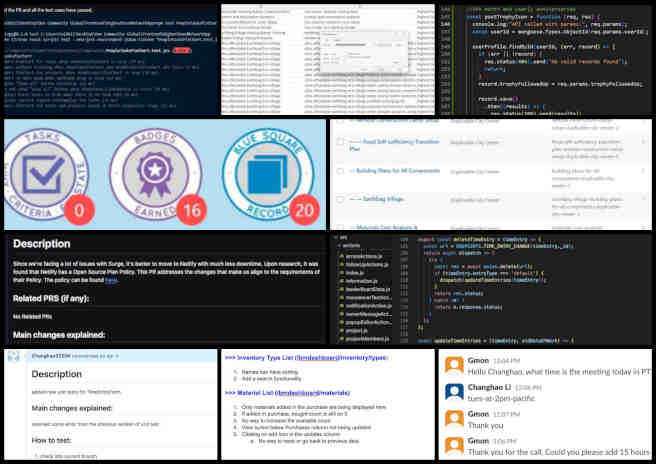
SKYE SOFTWARE DEVELOPMENT TEAM
The Skye Team’s summary, covering their work on the Highest Good Network software was managed by Luis Arevalo (Software Engineer) and includes, Abi Liu (Software Developer), Angela Cheng (Full Stack Developer), Gowtham Dongari (Software Engineer), Youyou Zhang (Full Stuck Developer), Sai Preetham Dongari (Full Stack Developer), and Keshav Daga (Software Engineer). The Highest Good Network software is how we’ll be managing and building a cooperative future on social architecture, construction, production, and maintenance processes. This week, Abi collaborated with Harsh to modify the weekly summary reports API, adding an optional comparison period query parameter to provide more flexibility for the front end, building a cooperative future with improved data insights. Angela worked on replacing a service within the HGN Software Development project, integrating the Pinterest API, addressing authentication, and debugging token issues, though pin creation was still occurring in Pinterest’s sandbox environment. Gowtham focused on reviewing pull requests PR #2614, PR #2604, PR #2607, and PR #2624 for the HGN Software Development project, documenting activities in Dropbox. Keshav analyzed a bug, identified necessary code changes, and outlined an implementation plan, with work on the fix continuing. Luis implemented a system to send emails after three warnings, seeking clarification from Jae and consulting with Abi to refine the approach, and began writing template code for email tracking. Preetham selected a new task pending approval and contributed to and reviewed multiple pull requests, also completing a weekly summary. Youyou started working on a bug in the badge management page, reproducing the issue locally, reviewing the codebase, and planning to continue her efforts next week. See the Highest Good Society and Highest Good Network pages for more on how this relates to building a cooperative future. See the collage below for the team’s work this week.
SOFTWARE PR REVIEW TEAM A-I
The PR Review Team’s summaries for team members’ names starting with A-I and covering their work on the Highest Good Network software was managed by Vibhav Chimatapu (Data Analyst/Admin Assistant). The Highest Good Network software is a foundation of what we’ll be using to measure our results for building a cooperative future. This week’s active members of this team were: Abdelmounaim Lallouache (Software Developer), Ajay Kumar Reddy (Software Engineer), Carl Bebli (Software Engineer), Cillian Ren (Software Engineer), Crystal Low (Software Engineer), Dhrumil Shah (Software Engineer), Faye Lyu (Software Engineer), Haoyue Wen (Software Engineer), and Ishan Goel (Software Engineer). They reviewed all the Highest Good Network PRs (Pull Requests) shared in this week’s update. Learn more about how the Highest Good Network will measure and assist in building a cooperative future in the Highest Good Network open source hub. The collage below shows a compilation of the work from this team.
SOFTWARE PR REVIEW TEAM J-Q
The PR Review Team’s summary for team members’ names starting with J-Q and covering their work on the Highest Good Network software was managed by Saumit Chinchkhandi) Administrative Assistant and Software Engineer). The Highest Good Network software is a foundation of what we’ll be using to measure our results of building a cooperative future. This week’s active members of this team were: Kurtis Ivey (Software Engineer) and Nathan Hoffman (Software Engineer). They reviewed all the Highest Good Network PRs (Pull Requests) shared in this week’s update. Learn more about how the Highest Good Network will measure and assist in building a cooperative future in the Highest Good Network open source hub. The collage below shows a compilation of the work from this team.
SOFTWARE PR REVIEW TEAM R-S
The PR Review Team’s summary for team members’ names starting with R-S and covering their work on the Highest Good Network software was managed by Olawunmi “Ola” Ijisesan (Administrative and Management Support) and Mrudula Chavali (Administrative Assistant and Data Analyst). The Highest Good Network software is a foundation of what we’ll be using to measure our results of building a cooperative future. This week’s active members of this team were: Rishitha Mamidala (Software Developer), Saniya Farheen (Software Engineer), Shreya Vithala (Software Engineer), Shuddhendu Mishra (Software Engineer), Snehal Dilip Patare (PR Reviewer), Sriram Seelamneni (Software Engineer), Strallia Chao (Software Engineer). She reviewed all the Highest Good Network PRs (Pull Requests) shared in this week’s update. Learn more about how the Highest Good Network will measure and assist in building a cooperative future in the Highest Good Network open source hub. The collage below shows a compilation of the work from this team.
SOFTWARE PR REVIEW TEAM T-Z
The PR Review Team’s summary for team members’ names starting with T-Z and covering their work on the Highest Good Network software was managed by Olawunmi “Ola” Ijisesan (Administrative and Management Support) and Samarth Urs (Administrative Assistant and Data Analyst). The Highest Good Network software is a foundation of what we’ll be using to measure our results of building a cooperative future. This week’s active members of this team were: Vedant Gandhi (Software Engineer), Viraj Panchal (Software Engineer), Vishnu Priya Atheti (Software Engineer), Yashwanth Pokala (Software Engineer, Developer) (Linkedin link not provided in the document) and Yiyun Tan (Software Engineer). They reviewed all the Highest Good Network PRs (Pull Requests) shared in this week’s update. Learn more about how the Highest Good Network will measure and assist in building a cooperative future in the Highest Good Network open source hub. The collage below shows a compilation of the work from this team, highlighting their commitment to building a cooperative future.
AND WE PRODUCED THIS WEEKLY UPDATES BLOG – CLICK HERE TO SUBSCRIBE
FOLLOW ONE COMMUNITY’S PROGRESS (click icons for our pages)
INVESTOR PAGES
GET INVOLVED
DONATE | WAYS ANYONE CAN HELP | MEMBERSHIP
CLICK HERE FOR ALL PAST UPDATES
 One Community
One Community


